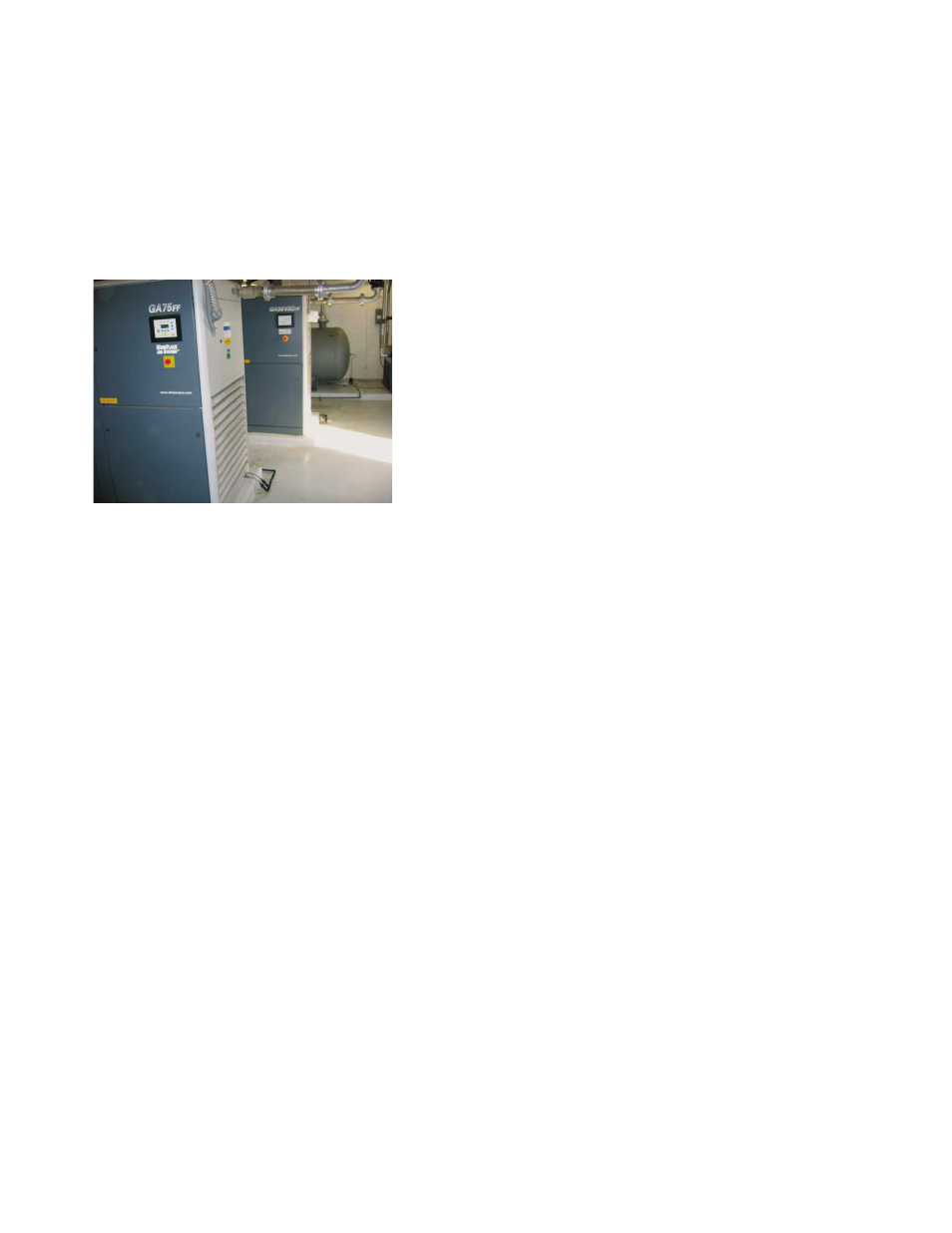Retrotec USACE User Manual
Page 217

Appendix D D87
approach with a centrifugal compressor, especially combined with inlet guide
vanes that direct the air in the correct direction into the impeller. With a rotary
screw machine, closing the inlet air valve creates a pressure drop across it (ap-
proximately 68.9 kPa (10 psi)), which the compressor must overcome to deliver
compressed air to the system. This results in extra electrical energy being re-
quired by the air compressor when operating at this part load condition.
D.4.3.16 Lack of Compressor System Control System (Ineffi ciency)
Figure D141. Large central compressed air
equipment requiring load control system.
Compressor system controls respond to reductions in the demand for com-
pressed air by stopping operation or unloading the compressor. In air com-
pressors of less than 113.6 W (30 hp) having a fairly constant load, start/
stop control is used. Electrical power is consumed only when the compressor
is running, but if there is frequent cycling the motor is likely to overheat.
Unloading a compressor allows the motor to continue to run, but the com-
pressor is not working. This type of control has signifi cant energy use even
when no air is being compressed. For a rotary screw machine, 15–35% of the
full-load electrical power will be used when completely unloaded. For small
reciprocating compressors, a combination of start/stop and load/unload con-
trol is used where the benefi ts of either approach can be applied. In larger
systems, variable-displacement or variable-speed type strategies can be used.
The variable-displacement control with a reciprocating compressor has set
operating levels, such as no load (0%), 25%, 50%, 75%, and full load (100%).
There is an almost linear relationship with power consumption and degree of
load. The use of variable speed to regulate compressor output is a very effi -
cient method. With those systems having multiple compressors, the controls
must operate the correct set of compressors to deliver the desired air fl ow.
The control system must consider the effectiveness of each machine unload-
ing strategy to obtain the optimum arrangement.
Failure to have such a control system (Figure D141) will typically rely on
the machines to use the control scheme they came with—start/stop or load/
unload. The failure to apply improved controls will result in ineffi cient opera-
tion and may lead to reduced life of equipment. This is especially true for large
multicompressor installations.
